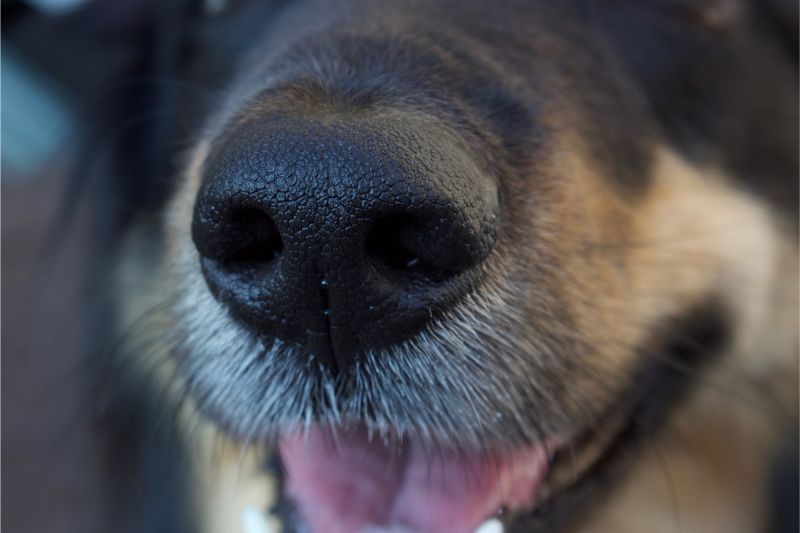The Amazing Canine Nose: Dog Nose Slits Explained

If you’ve ever marveled at your dog’s sense of smell, you’re not alone. The canine nose is definitely a doggy superpower. While it was originally developed to help them survive, a dog’s sense of smell has helped humans detect drugs, weapons, illegally transported plants and seeds, cadavers, missing people, cancer cells, and even low blood sugar.
What’s behind the powers of the canine nose? Dog nose slits, the small openings on either side of your dog’s nostrils, are partially responsible for a dog’s amazing sense of smell.
The Canine Nose
A dog can smell between 30,000 and 100,000 unique odors, and once he learns an odor he’s unlikely to forget it. This is compared to a human’s capability to smell only between 4,000 and 10,000 odors. Simply put, a dog can smell the one bad apple in a warehouse full of two million apples, and what’s more, he can take you directly to it.
When a dog inhales, the air coming into the nostrils is directed to two different pathways. One pathway sends air to the lungs for breathing. The other path sends a smaller percentage (about 12%) of air to an area in the back of the nose dedicated to scent analysis.
The Role of Dog Nose Slits
When dogs exhale, the nose slits go into action. Instead of expelling the scents along with the air as humans do, dog nose slits allow air to be exhaled while keeping scents inside the nose. A dog can keep the same scent in the back of his nose for up to 40 seconds, or several respirations.
What’s more, dog nose slits create a swirling action during exhalation that ushers in new scents to the nose. This swirling effect is one reason that once a dog finds the trail of something he’s tracking, he’s unlikely to lose it.
Essential Functions and Fun
Some breeds have better senses of smell than others, but all dog noses are sensitive. It’s important to keep your dog’s sniffer healthy. There are several diseases that can affect a dog’s sense of smell, including hypothyroidism, cancer, and diabetes. To keep your dog feeling their best, schedule a preventive care exam each year or as directed by your veterinarian.
Scent and nose work games are great ways to use your dog’s natural talent and keep her from boredom. Plus, they love having a job to do! Try these simple games to engage your dog and have some fun with her amazing nose.
Find it – Get your dog’s favorite toy or treat, place her in a sit/ stay, show her the treat, and then “hide” the treat in the same room. Release her with the “find it” command and watch her use her nose to find the hidden treat. You can gradually make this more challenging by hiding the treat out of her line of sight.
You can do a variation by getting several boxes of different sizes, and hiding treats in one of them. Turn your dog loose in the room and watch her smell out the location of the treats.
Hide and seek – If you have two people, this works well. One person hides, and the other stays with the dog. When you’re hidden, person two asks the dog, “Where is she?” while creating some verbal excitement. Release the dog and she will use her senses including her nose to search out her person.
As with all games, give lots of praise and treats. Make it fun and rewarding for your dog to play, and you’ll see her desire to sniff and search increase.
Give Leon Valley Veterinary Hospital a call with any questions or concerns. We’re here to help!


